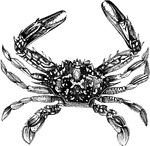Clipart tagged: ‘Decapoda’
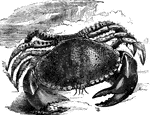
Common European crab
"These have the shell regularly rounded in front and narrowed behind; the legs are of moderate length,…
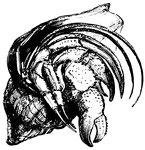
Hermit Crab
When alarmed, the hermit crab withdraws itself wholly into its portable house, closing the mouth of…
!["[The paguridae] includes the Hermit or Soldier Crab, <em>Pagurus Bernardus</em>, the abdominal portion of whose body is quite soft, forming a sort of cylindrical fleshy mass behind the shelly cephalothorax. As the comfort of the animal would be materially interfered with were this soft, worm-like appendage exposed to be grabbed at by every passing fish who might take a fancy to it, he usually seeks some shelter for its tail, and the habitation selected is generally the empty shell of some univalve mollusk." — Goodrich, 1859](https://etc.usf.edu/clipart/14900/14983/hermit-crab_14983_mth.gif)
Hermit-crab
"[The paguridae] includes the Hermit or Soldier Crab, Pagurus Bernardus, the abdominal portion…
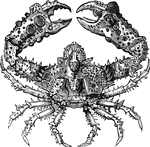
Parthenope horrida
"The Parthenope horrida, a native of the Atlantic and Indian Oceans, is covered with the most…
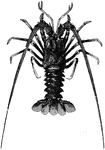
Spiny lobster
"The Spiny Lobster, Palinurus vulgaris, which may be taken as the type of the family, often…
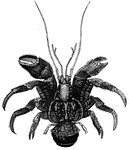
Purse-crab
"The Purse Crab, Birgus Latro is a very curious species found in Amboyna and some of the adjacent…

Shrimp
"They are distinguished by the possession of a large oval or triangular appendage which covers the base…
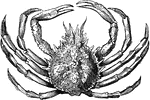
Spinous spider-crab
"In these the back is usually covered with spines and hairs. They generally live in deep water, and…
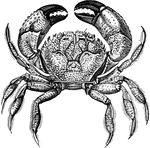
Eriphia spinifrons
"The Eriphea spinifrons, for instance, distributed in nearly all seas, has the front covered…
